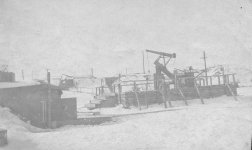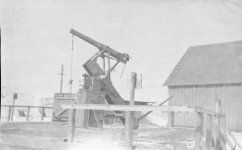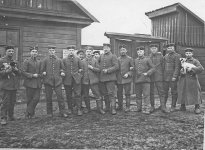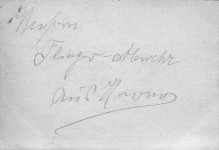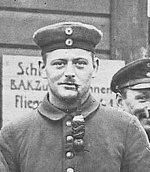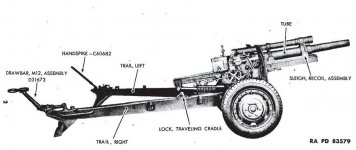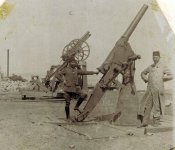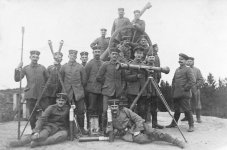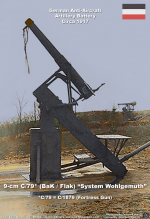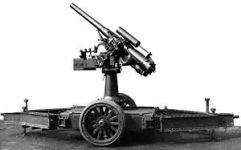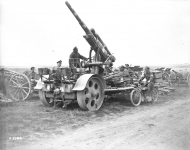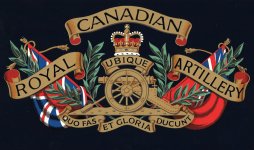Steve Nick
Well-known member
I have spent the the last couple of days researching and touching up the "never before seen" photos from my next door neighbours great uncle.
He was with the Prussian Foot Artillery from 1914 with the 4th Foot Artillery Regiment (Magdeburg) to the end of the war manning 21cm Mortars and 15 cm Naval guns.
Among the photos I found these very intriguing.
The first two show what appears to be a gun battery showing a 105mm gun mounted in an extreme elevation either for long range or anti-aircraft application. I say AA application based on a note on the back of one of the pictures shown in photo #4 which seems to read Flieger Gewehr. What I don't get is how would this be served in action? How would it be re-loaded? How would recoil be handled?
The 3rd picture shows a group of artillerymen, three of whom I recognize from the rest of the photo album. The 2nd , 3rd and 4th from the left. (#4 is the great uncle). I'm speculating here but is it possible that these guys are on a training course? Have a look at the sign behind the man in picture #5. I'm guessing that the top line may be Schule (school) and the bottom line could be Flieger ?
Is it possible that these men are on an Anti Aircraft course and the gun photos are at the gunnery school?
He was with the Prussian Foot Artillery from 1914 with the 4th Foot Artillery Regiment (Magdeburg) to the end of the war manning 21cm Mortars and 15 cm Naval guns.
Among the photos I found these very intriguing.
The first two show what appears to be a gun battery showing a 105mm gun mounted in an extreme elevation either for long range or anti-aircraft application. I say AA application based on a note on the back of one of the pictures shown in photo #4 which seems to read Flieger Gewehr. What I don't get is how would this be served in action? How would it be re-loaded? How would recoil be handled?
The 3rd picture shows a group of artillerymen, three of whom I recognize from the rest of the photo album. The 2nd , 3rd and 4th from the left. (#4 is the great uncle). I'm speculating here but is it possible that these guys are on a training course? Have a look at the sign behind the man in picture #5. I'm guessing that the top line may be Schule (school) and the bottom line could be Flieger ?
Is it possible that these men are on an Anti Aircraft course and the gun photos are at the gunnery school?

